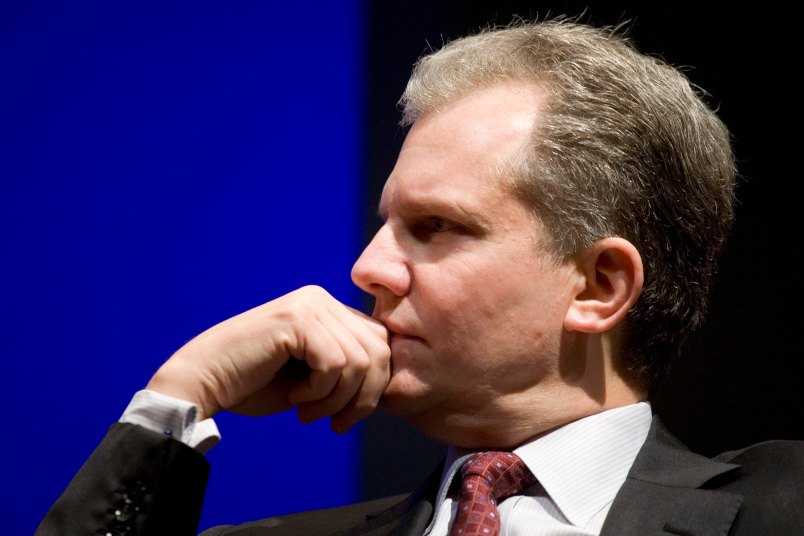The most fascinating, even mysterious, part of the Abramson firing for me is just how such a big institution, with so many good lawyers and PR people, could manage to set off such a toxic explosion within its own precincts. And after that be seemingly so unprepared for the fallout. As I noted earlier, a lot of this seems to come down to the person of Arthur Sulzberger, who is after all the owner of the paper. (Of course, it comes down to him.) And his leadership of the Times – admittedly during one of the most challenging periods in decades – has already struck me (and many others who know vastly more than me) as weak and uncertain.
But reading over all the stuff that’s been reported – and mainly by Ken Auletta in the New Yorker and Dylan Byers in Politico – I feel like I’m starting to get a progression of events that makes intuitive sense. And it’s one that brings together even seeming contradictions in the account.
We start with the seemingly undisputed fact that Abramson and Sulzberger had a rocky relationship and that he had misgivings about her management. We also know that emails obtained by Auletta from only a few weeks before she was fired suggest she was in good standing and the paper was eager to secure her tenure well into the future.
So whatever the misgivings and disagreements, there was no acute crisis in Abramson’s relationship with Sulzberger. So there had to be a precipitating event. And all the reporting now seems to be in agreement it came over the Abramson’s attempted hiring of Janine Gibson of The Guardian to lead the paper’s digital efforts as a coequal to Baquet.
Depending on which version of events you credit, Abramson either lied to her superiors, telling them she’d kept Baquet and other top editors informed of her dealings with Gibson or there was some misunderstanding. Either way, Baquet and Gibson had lunch and Baquet came out of that lunch stunned and angry, either because he learned that Abramson had already offered her the job or because she’d already offered her the job and offered it as a position coequal to Baquet’s.
Auletta’s latest report gives some reason to believe this was more a misunderstanding than a deception. But – again, this seems to be agreed in all the reporting – Baquet then meets with Sulzberger and says he’s been humiliated and can’t work with Abramson anymore. In Auletta’s words, “At a dinner with Sulzberger, Baquet basically described the incident as a humiliation. He could no longer work with Abramson. It was him or her.”
As the story goes, Sulzberger decided that Abramson had willfully misled him and the paper’s CEO, saying Baquet and others were briefed and on board when they were not. This was an unrecoverable breach and he decided to fire her.
The Times is insisting that Abramson disputing her pay had nothing to do with her termination. But the paper’s spokesperson earlier confirming that this has played a role makes that that denial not particularly credible. For me it’s not so much that I think the pay dispute led to the firing as it makes the timing and drama of the firing more mysterious. Whether or not you believe that Abramson was the victim of employment discrimination and whether or not you think that played a role in the decision to fire her, any employment lawyer will tell an employer to be extremely cautious in firing an employment in the midst of a dispute over pay and gender discrimination. Not just the lawyer will say you can’t retaliate by firing the person but even if you’re not be really, really careful. Or rather, just don’t do it. I cannot imagine the Times lawyers didn’t have this conversation with Sulzberger. So again it makes the timing and decision more curious.
Here’s what brings the whole thing together for me – both the suddenness of the decision, the apparent indifference to the predictable public firestorm and the consistent inability to provide a clear explanation of why it happened. And before going on, let me be clear that while I’m relying on the reporting of Auletta, Byers and others, I’m putting this together with a few added inferences that are purely my own and purely inferences.
We know Sulzberger has a rocky relationship with Abramson, maybe because she was a bad manager, maybe because of a gendered perception that she was “pushy.” We also know that Baquet was viewed universally as Abramson’s successor, by Abramson just as much as by Sulzberger and everyone else. It seems clear that Sulzberger was at least annoyed by Abramson’s suggestion that her compensation was lower than it should have been because of her gender and especially because she’d retained a lawyer about it. We also know, I think critically, that Baquet recently been courted by Bloomberg.
Let’s assume that Sulzberger wasn’t happy with Abramson’s leadership and was miffed by the pay dispute. Baquet is her successor and thus, in a way, Sulzberger’s safety cord in his troubled relationship with Abramson, a talented, seemingly universally-liked successor positioned and ready to take the reins. Baquet approaches Sulzberger and essentially gives him an ultimatum. He can’t work with Abramson anymore. Sulzberger isn’t just faced with losing one of the Times top employees and a future leader of the paper. He’s also suddenly faced with being stuck with Abramson.
This last point strikes me as key. Whatever the nature of the deception or misunderstanding, whether or not Sulzberger thought he’d been misled, this would have constituted a real crisis for Sulzberger. He doesn’t just lose Baquet but he’s stuck with Abramson. Yes, of course, she can be fired at any time but not nearly as easily. The Times hires its executive editors from the inside after long service. And he’s the one groomed for the position. Already unhappy with Abramson, faced with losing a future leader and suddenly having no clear replacement for her, he panics and fires her.
Of course, ‘panic’ colors the decision. Maybe he acted decisively in the interests of the family trust. Regardless it strikes me as a convincing explanation of a pretty sudden decision that was made with little preparation and perhaps little thought for the consequences and one Sulzberger and the paper weren’t in much of a position to explain. It makes sense of the seemingly crazy decision to can the female editor of the nation’s top paper in the middle of a dispute over pay equity.
For me at least it also lines up a lot of seemingly contradictory reporting into a consistent whole. Again, I’m taking the reporting of others and drawing what I think are reasonable inferences. I’m not basing this on any reporting of my own.







